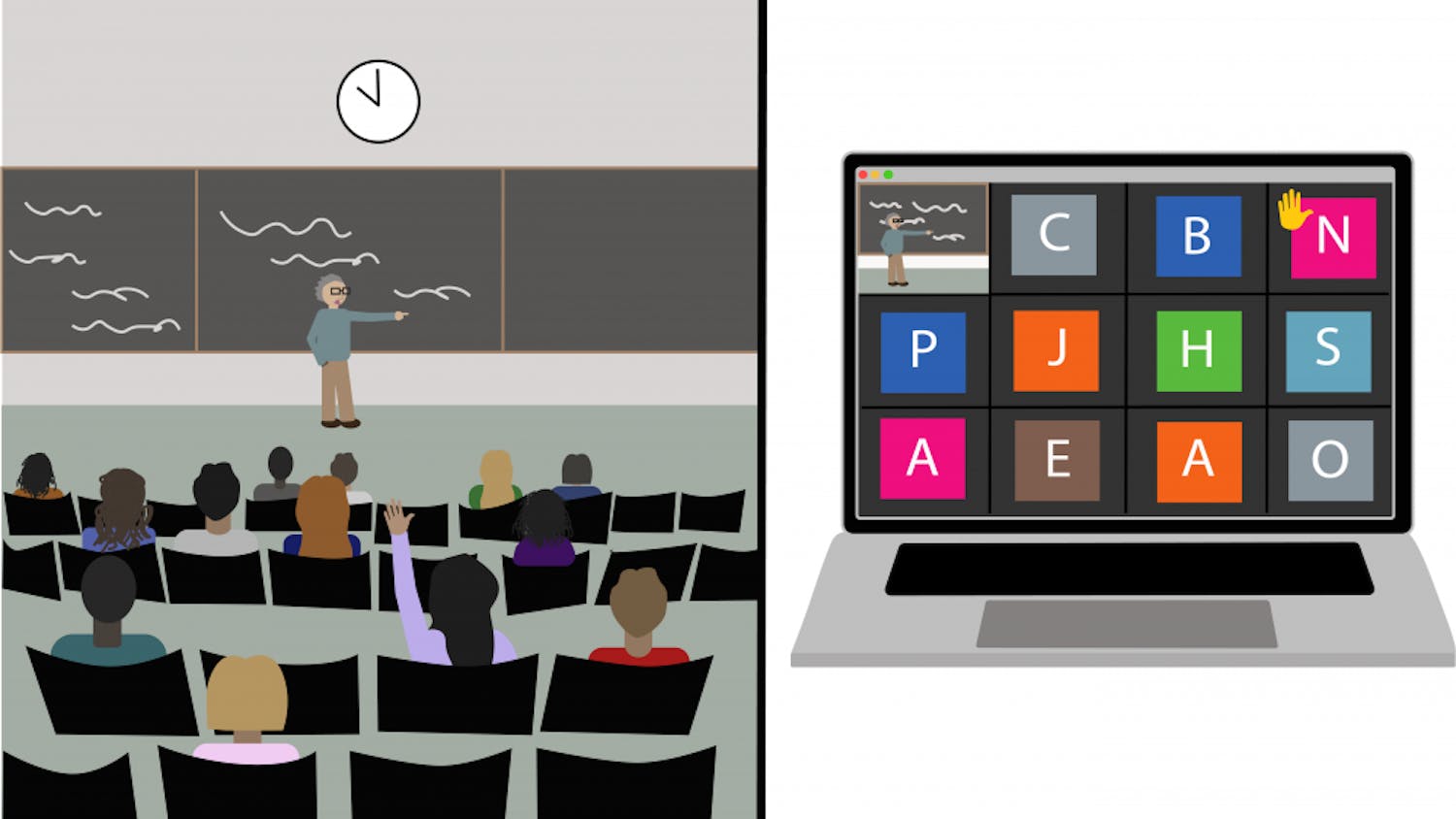In the debate over the addition of pluses and minuses to the University's grading system, proponents of the change have argued that a more accurate method of evaluating students will reduce grade inflation trends across academic disciplines.
The number of A's given out in undergraduate courses has climbed steadily for the past decade, according to figures available on the University Web site provided by the Office of Institutional Research.
In the 1994-1995 academic year, 39.2 percent of all grades given were A's, 29.7 percent were B's and 7.5 percent were C's.
In contrast, the 2004-2005 research study found that the percentage of B's awarded declined to 24 percent, while C's fell to 4.6 percent. The study also shows a 7.5 percent increase in the number of A's awarded, rising to 46.7 percent.
In the life sciences, the figures paint an even more dramatic picture. In 1994-95, 34.8 percent of grades in life sciences were A's. For 2004-05, the number rose to 46.6 percent, an almost 12 percent increase.
Though the OIR's recent findings mark a significant change compared to the office's figures from 10 years ago, these percentages have been more constant over the past five years.
Dean of the College Paul Armstrong partly attributes the increase in the distribution of A's in undergraduate courses to an "extraordinary pressure to get A's" evident on campus. "The push for students to get A's undermines the New Curriculum," he said.
One of the many issues the University faces in coping with grade inflation is distinguishing between accurate grading and tougher grading. One aim of the College Curriculum Council's proposal to add pluses and minuses to the University's grading system is to gauge student performance more accurately.
"The reason I think we should move from whole letter grades to a plus/minus system is because of the distribution of grades over the years," Armstrong said.
Armstrong said he believes that the differences between a B-plus and an A-minus are not accurately reflected under the current whole letter grade system. This can also mean that students who do B-plus work often receive A's for final grades.
Armstrong said the addi-tion of pluses and minuses would provide faculty free reign to evaluate students' performances.
Fighting inflation at other IviesBrown is not the only Ivy League institution that faces grade inflation concerns. A Boston Globe article published in October 2001 revealed that 91 percent of Harvard University's class of 2001 graduated with honors of some kind, compared to 51 percent at Yale University and 44 percent at Princeton University.
A 2001-02 Harvard faculty study found that 46.8 percent of all grades were in the A range, according to a 2005 Harvard Crimson article. Dur-ing the same year at Brown, A's made up 42.3 percent of all undergraduate grades.
Several of Brown's peer institutions have undergone evaluations of their grading systems, prompted in part by stories like the 2001 Boston Globe article.
At Columbia University, transcripts include mean grades for each class. In April of 2004, Princeton approved an aggressive plan to combat inflation, instituting a quota system that permits only specified percentages of A's and B's. This approach seems to have been effective in reducing the percentage of A's awarded. For 2004-2005 at Princeton, A's accounted for 40.9 percent of all undergraduate grades, down from the previous year's 46 percent. In the humanities, the percentage of A's was 45.5 percent, compared to the previous year's 56.2 percent. The field of engineering saw A's accounting for 43.2 percent of grades, down 5 percent from 2003-2004.
Yale, like several other Ivy League institutions, does not release information on grade distribution.
Shelly Kagan, professor of ethics and social and political philosophy at Yale, said he finds this policy peculiar, par-ticularly because other schools where he taught previously, including the University of Pittsburgh and the University of Chicago, do disclose this information.
"After I had been teaching here for a year, it became clear to me that students were treating me as if I were a harsh grader compared to other faculty at the school," Kagan said. "A is excellent, B is good, and C is average. Consequently, if you do good for me, Yale says B. So a B for me means good. I reserve A's for those who are genuinely excellent."
When he asked around for more information on grade distribution, Kagan said he was refused access to the mater-ial by Yale administrators. "The reason for not sharing information about grading with faculty members became very clear," Kagan said. "Those faculty who found out they were harsher graders would ease up. Those who graded lightly would then grade more harshly. There would then be a constant upward pressure toward harsher grading. By calling, they were worried I would exacerbate grade inflation."
Students seem less concernedFor her part, Michaela Cohen '09 said she is not surprised that 46.2 percent of Brown's undergraduate grades in the humanities are A's. "That doesn't seem like an exorbitant amount of A's to me," Cohen said. "The percentage doesn't matter so much as (students') learning."
Dorota Poplawska, a fresh-man at Yale, does not feel that grade inflation is a problem at her school.
"I guess (Yale's admin-istration) trust(s) their professors with grading techniques and do not feel that this is an issue that needs to be addressed," Poplawska said. "I mean, I have seen the amount of work and the quality of work people do here and it is really impressive. We are used to getting high grades so we will do anything to keep that up."




